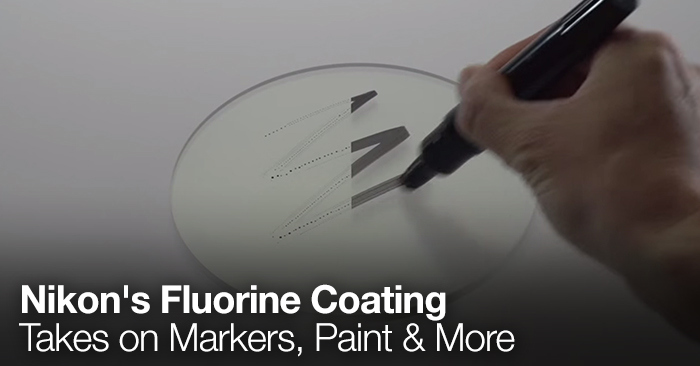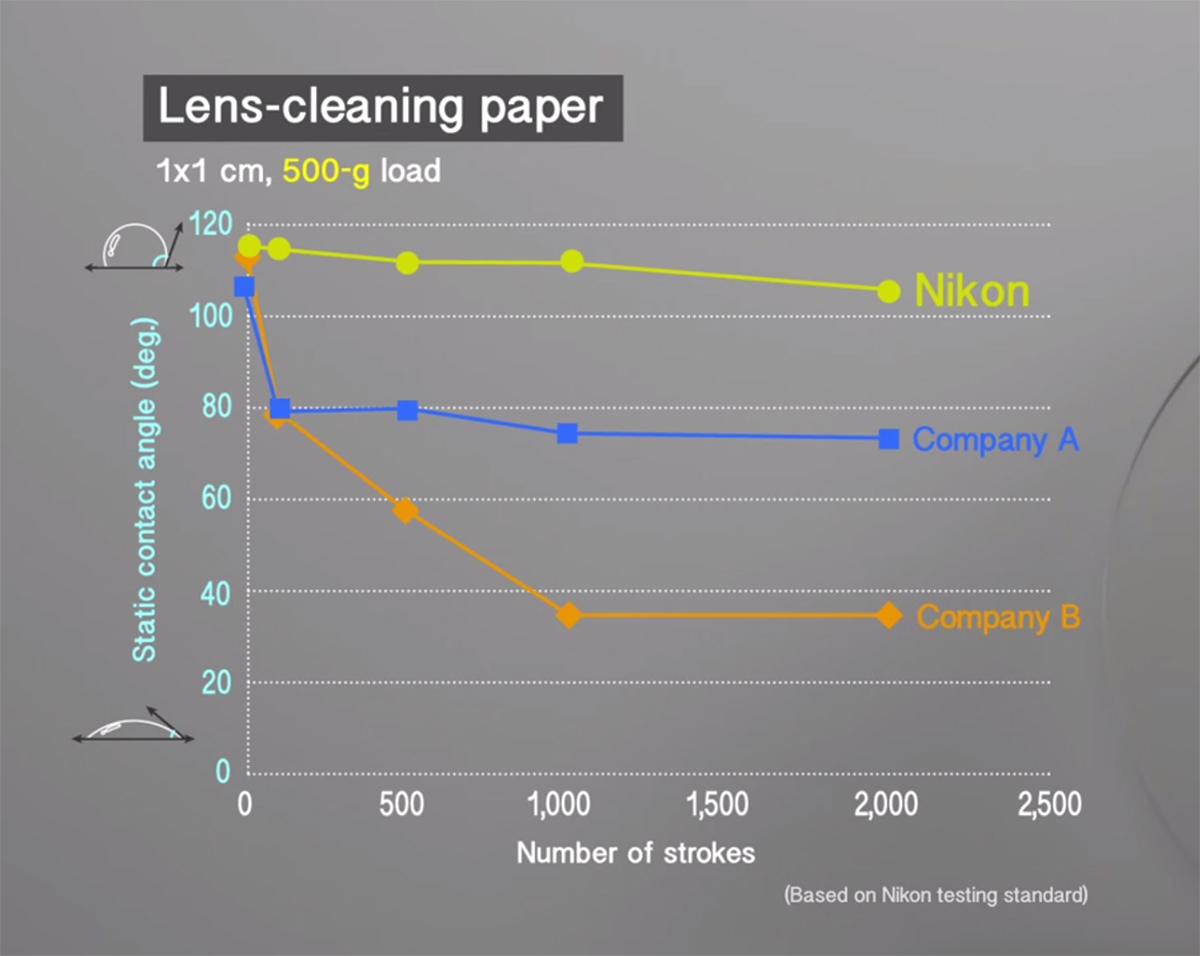
Nikon’s Fluorine Coating Takes on Markers, Paint & More
Nikon’s adding an invisible coating to their lenses – a clear force field to combat dirt and grime.
Nikon has recently unveiled their fluorine coat which comes standard on their NIKKOR 400mm f/2.8E ED VR and VF-S Teleconverter TC-14EF III. The invisible flourine coating repels dust and is anti-reflective, making it effective at combating dirty lenses.
A lenses ability to repel liquid is measured by it’s contact angle. The higher a contact angle the less likely liquid is going to stick to the lens. The fluorine lens coating allegedly has a static contact angle of 110 degrees compared to 40 degrees on a regular piece of glass. This makes it incredibly resistant to grime such as:
- Water
- Mud
- Permanent Marker
- Ink
- Paint
If you haven’t seen the video here it is (warning, a bit cheesy!):
This graph is one of the main takeaways from the video:
It’s not simply scientific mumbo jumbo – it actually tells us a lot about the fluorine coating. The graph explains that while other companies have a static contact angle similar to Nikon, after the first few swipes competitors lenses tend to see a sharp decrease in static contact angle size. This means the competitions lenses get “sticky” after you try to wipe them off, but the Nikon lens will keep its water prevention power (pretty cool).
The coating is only standard on the NIKKOR 400mm f/2.8E ED VR and VF-S Teleconverter TC-14EF III right now. But if the fluorine coating works as good as the video implies we would expect to see it on a lot of future lenses.
What do you think of the new fluorine lens coating?
Share in the comments below.








